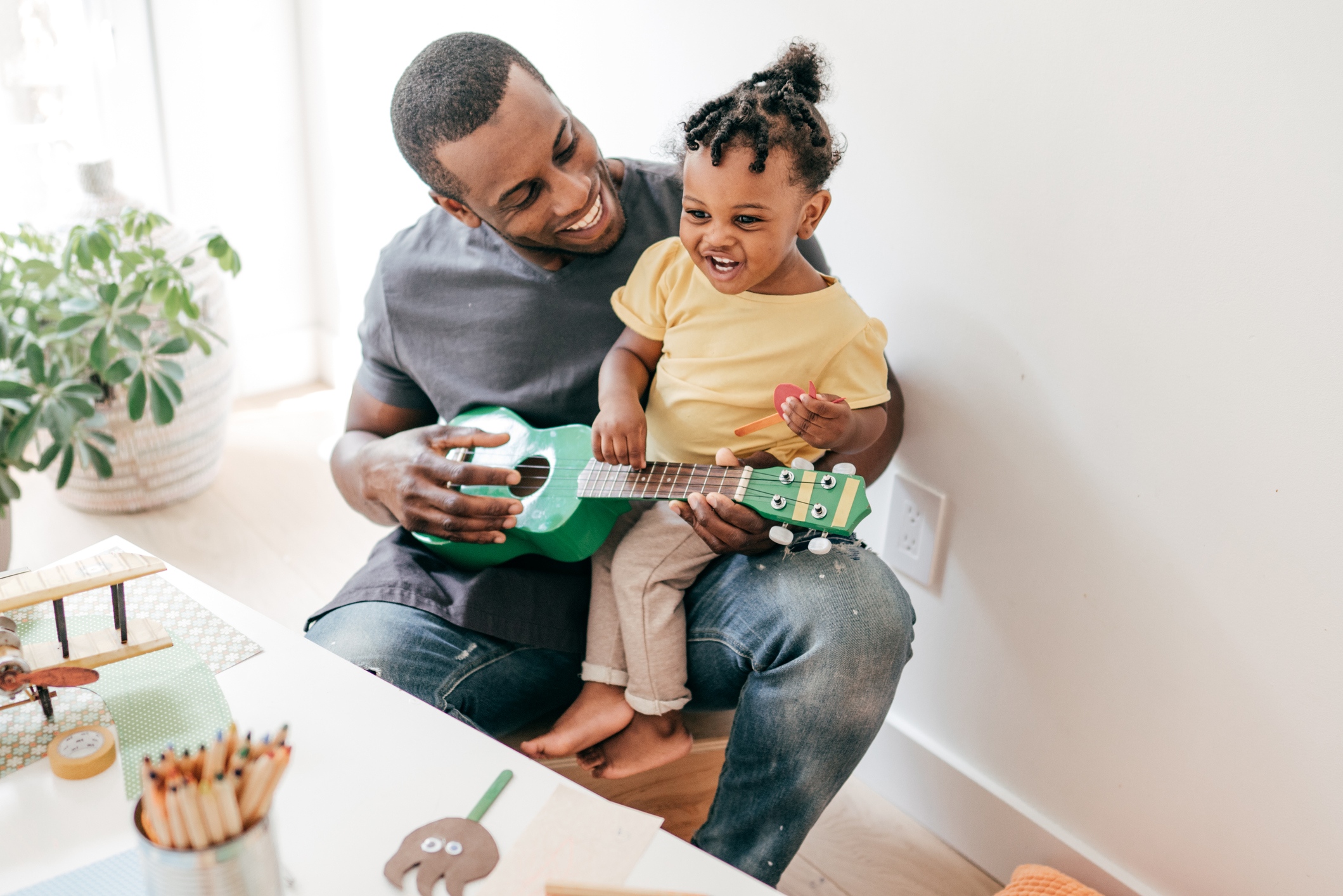Sounds before letters

Our partners at Boogie Mites share how musical activities can strengthen foundations for learning phonics, and offer some activity ideas to practice together at home…
Phonics is used to teach children to read and write, by matching sounds of spoken English with letters. Parents are often keen to help their children with phonics, but they mistakenly think it is about learning the letters. It is important to understand that strong sound (phonological) awareness must come before letters.
Research shows that phonological awareness at age 3-5 is the best predictor for reading and writing skills, therefore, it is the most important foundation for school ready literacy. Indeed, trying to learn the alphabet, letter names and symbols, before the phonological foundations are in place can be detrimental to reading, like building a house on sand.
Phonological awareness is all about hearing sounds in the order in which they occur within a word. Music practice helps children develop a higher awareness of sounds.
Developing Phonological Awareness through Music Practice
Regular or daily participation in active music-making (e.g. singing and percussion activities), with and without backing music, will develop melodic and rhythmic awareness skills. This helps to strengthen children’s ability to process what they are hearing and develop their phonological awareness. As a bonus, these music skills also lay strong foundations for cognitive function generally.
Try It Yourself!
You don’t need to be a musician to lead brain-boosting music-making activities for your little one!
Here are 3 key areas with tips for activities that you can practice at home to support development of strong foundations for phonics, and boost cognitive function generally:
1. Move to the beat with your child, keeping the beat using body percussion, movement and instruments. Music with a strong steady drumbeat will maximise the potential to develop rhythmic awareness.
- Use instruments to keep the beat, such as shakers, sticks and drums.
- Keep the beat with actions – marching, bobbing up and down, body percussion such as clapping, stamping and thigh-tapping.
- Play along with different styles of recorded music with a strong drumbeat.
- Create rhythmic patterns of sounds, actions, body percussion sequences and words.
2. Listening to musical arrangements from birth helps to develop pitch and melodic awareness. Encouraging children to listen to and sing daily, with a wide range of melodies, will help them to develop an awareness of pitch, tempo, dynamics and to refine their ability to hear and sing in tune.
- Use the call-and-response method for leading sequencing of vocal sounds and instrumental sounds. Sing or say the words, and encourage your child to repeat the after you.
- Play listening games with different musical sounds representing different actions/sounds.
- Play and sing along with different styles of recorded music with a catchy melody, and introduce harmonies.
- Use songs/rhymes to tell stories. This helps to develop expression in storytelling skills, and is supported by the dynamics, tempo and lyrics of the song.
3. Playing with words through musical activities that focus on the sequencing will maximise the development of phonological awareness. Specifically, the repetition of sounds, actions and syllables.
- Finish the rhyme line with rhyming words; play with rhyming pairs within a song.
- Use tapping sticks to tap out the rhythm (syllables) of words within a song.
- Exaggerate the individual units of sound within words.
Make It Fun!
Children develop an interest in things they think we are interested in, so we need to demonstrate an interest in sounds all around us. We need to make the music activities fun and enjoy them ourselves! The music used should be engaging and inspiring for all involved. Use funky, modern, upbeat recorded music as well as a capella activities.
Boogie Mites Free Resources for Bright Horizons Families
Our School Ready Literacy Programme uses songs and activities that play with tempo, dynamics, timbre and pitch. We use homemade percussion instruments with some songs and the themes are always fun for young children, featuring jungles, transport and under the sea. Many different genres of upbeat music are used to offer a diverse experience, and to keep the adults as involved and as motivated as the children. Children can be progressed from simple sequences of actions and sounds, to more complicated sequences and rhythms.
During lockdown, Boogie Mites created workshop videos for children to enjoy at home with their families and these have been added to the digital programme resources which you can purchase to access at home. Your children will love sharing the songs with you and the wider family at home, you can ensure they get the repetition to maximise the potential benefits, and because it’s fun!
Find out more: https://boogiemites.co.uk/bh-bm-music-at-home/
Boogie Mites also have a Facebook page for parents where they share tips, resources and music-making ideas. You can follow it here: https://www.facebook.com/BoogieMitesMusicClub/
They have recently launched a new website which includes information for parents, free songs to try, videos and much more: https://boogiemites.co.uk/
Bright Horizons parents can enjoy a discount on all our items using the code: BHPARENTS10%





